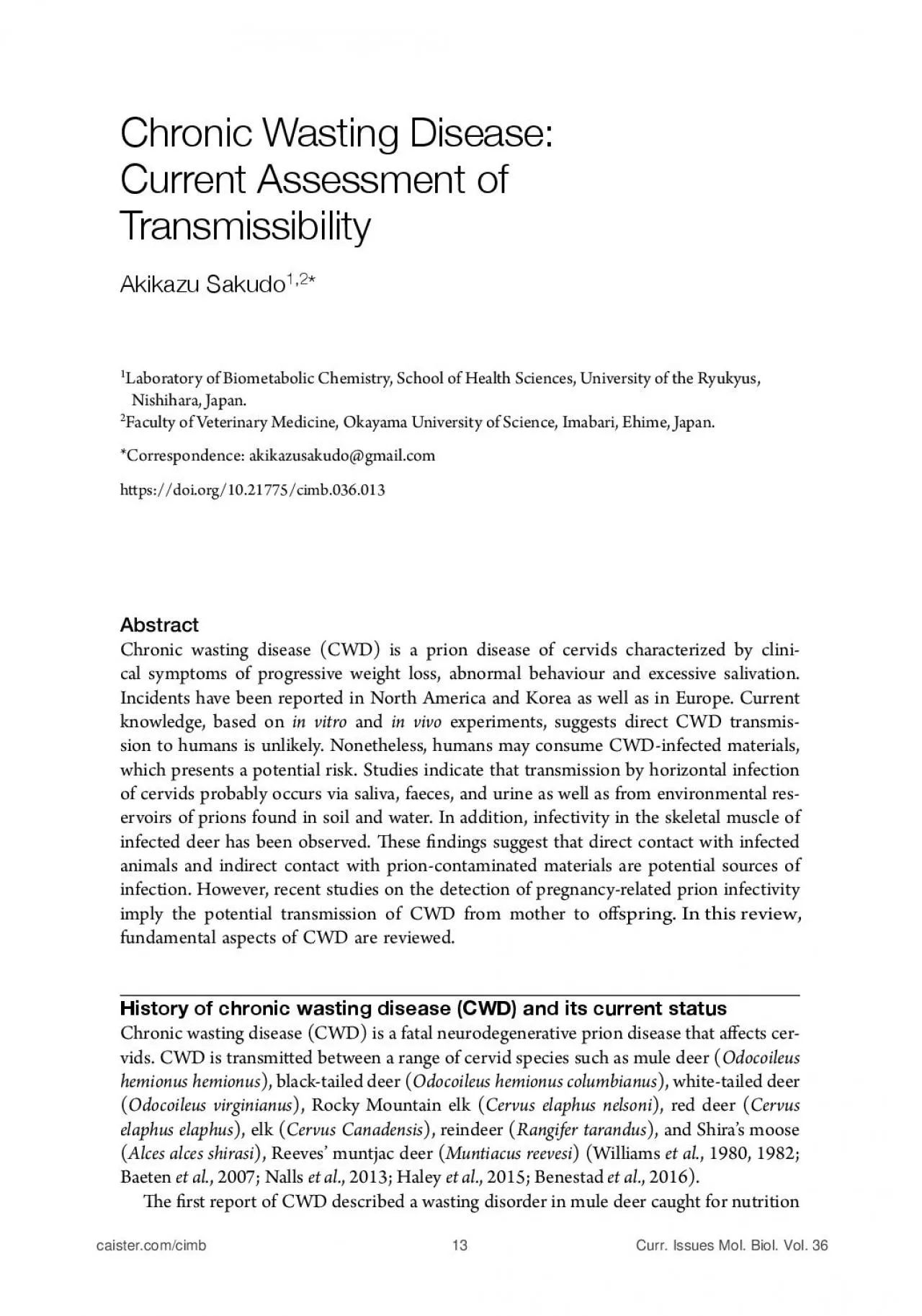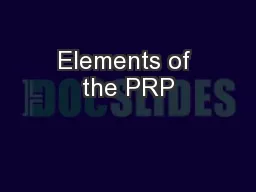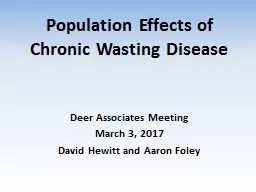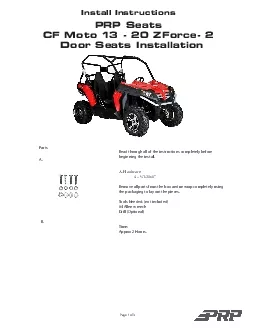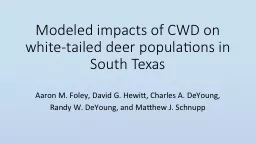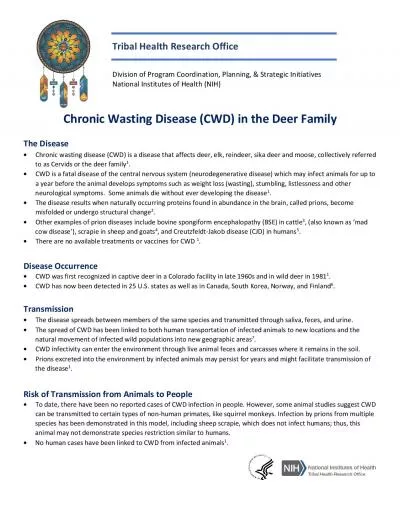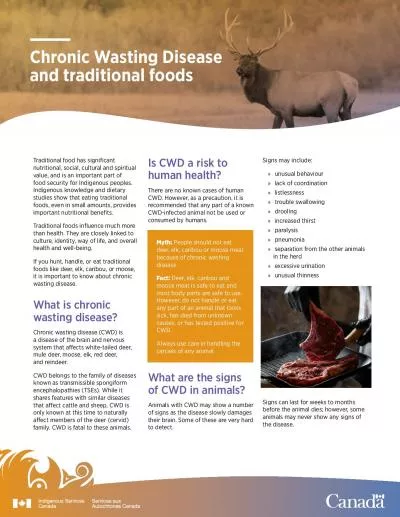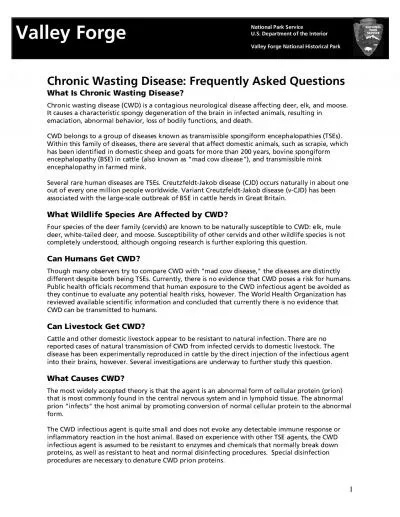PDF-skeletal muscle of CWDinfected deer causes CWD in cervid PrP expressi
Author : daniella | Published Date : 2022-08-26
Sakudo mice Angers et al 2006 is nding indicates that muscle is a potential source of infec tion suggesting that the meat of deer must be treated with caution At
Presentation Embed Code
Download Presentation
Download Presentation The PPT/PDF document "skeletal muscle of CWDinfected deer caus..." is the property of its rightful owner. Permission is granted to download and print the materials on this website for personal, non-commercial use only, and to display it on your personal computer provided you do not modify the materials and that you retain all copyright notices contained in the materials. By downloading content from our website, you accept the terms of this agreement.
skeletal muscle of CWDinfected deer causes CWD in cervid PrP expressi: Transcript
Download Rules Of Document
"skeletal muscle of CWDinfected deer causes CWD in cervid PrP expressi"The content belongs to its owner. You may download and print it for personal use, without modification, and keep all copyright notices. By downloading, you agree to these terms.
Related Documents

